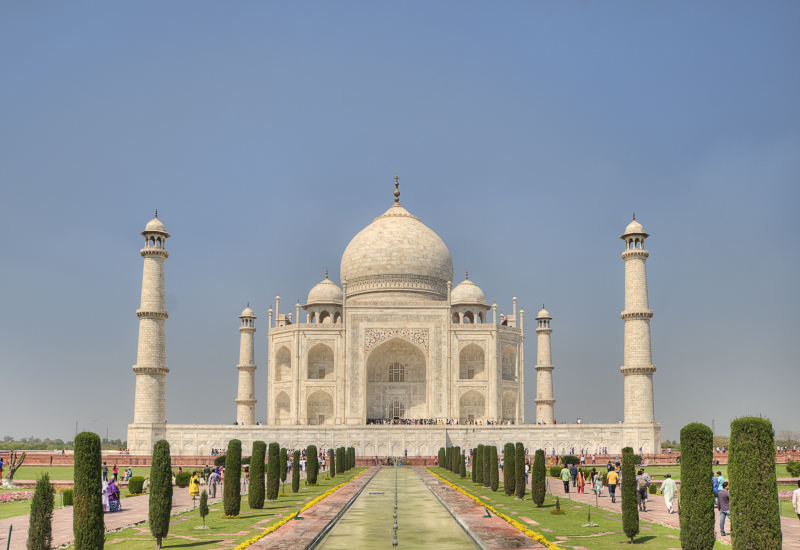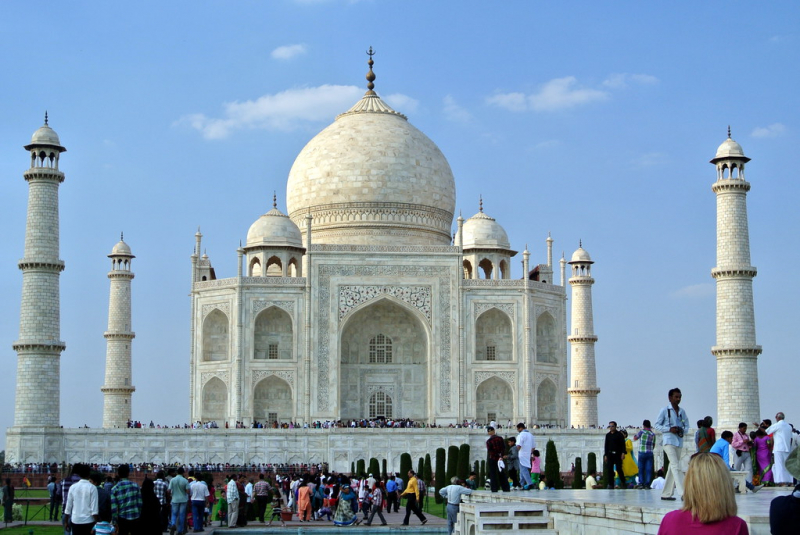Taj Mahal
On the right bank of the Yamuna River in the Indian city of Agra stands the Islamic ivory-white marble mausoleum known as the Taj Mahal. In 1983, the Taj Mahal was named a UNESCO World Heritage Site in recognition of its status as "the gem of Muslim art in India and one of the most beloved works of art in human history". Many people believe it to be the finest example of Mughal architecture and a representation of India's long history. More over 6 million people visit the Taj Mahal each year, and it was chosen as one of the New 7 Wonders of the World (2000-2007) in 2007.
The Taj Mahal builds on the design traditions of older Mughal and Indo-Islamic buildings. Successful Timurid and Mughal structures, such as the Gur-e Amir, Humayun's Tomb, which served as the model for the Charbagh Gardens and the site's hasht-behesht (architectural) plan, Itmad-Ud-Tomb Daulah's (also known as the Baby Taj), and Shah Jahan's own Jama Masjid in Delhi, were specifically cited as sources of inspiration. Earlier Mughal structures were mostly made of red sandstone, but Shah Jahan encouraged the use of white marble that had semi-precious stones inlaid into it. Buildings he supported developed to unprecedented heights of sophistication.
With the probable exception of the Dome of the Rock in Jerusalem, the Taj Mahal is currently the most well-known example of Islamic architecture in existence. For Mumtaz Mahal and Shah Jahan, there are cenotaphs (fake tombs) within; the genuine tombs are in a room below the ground level. Travelers said that Shah Jahan had planned to erect a similar tomb for himself made of black granite on the other bank of the Yamuna as early as the 1660s; however, current academics consider this to be a myth with no basis in reality.
Location: Agra, Uttar Pradesh, India









